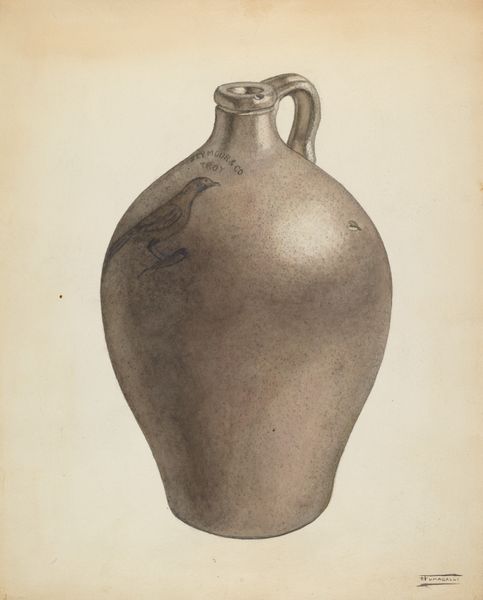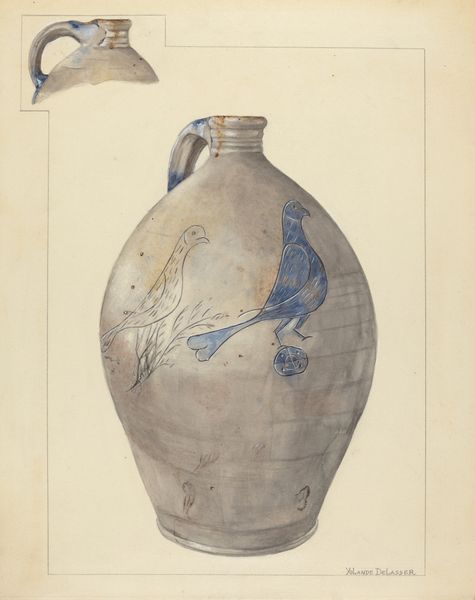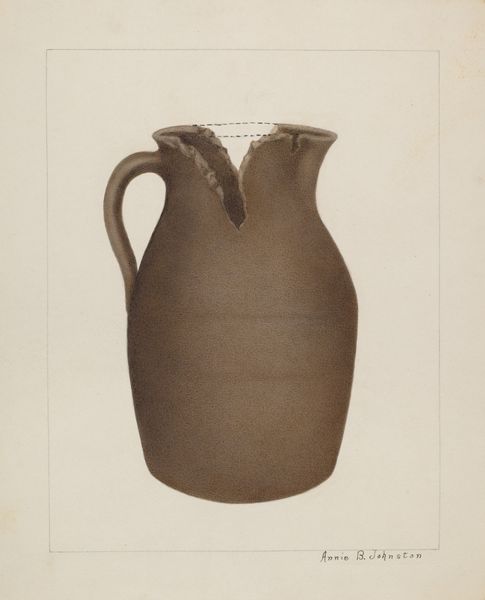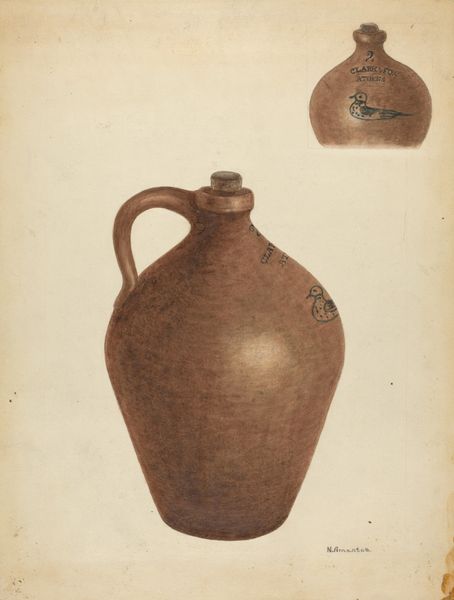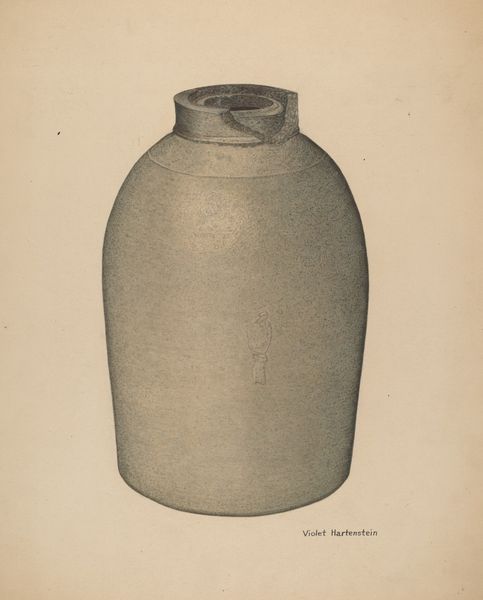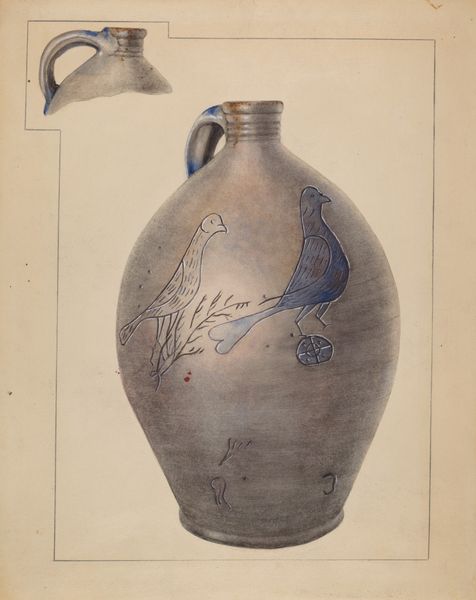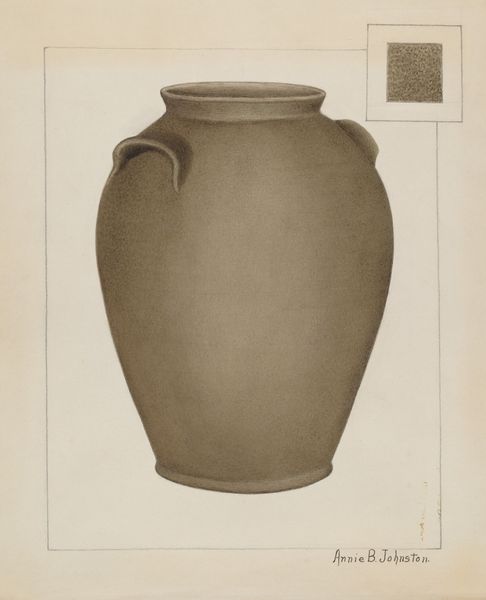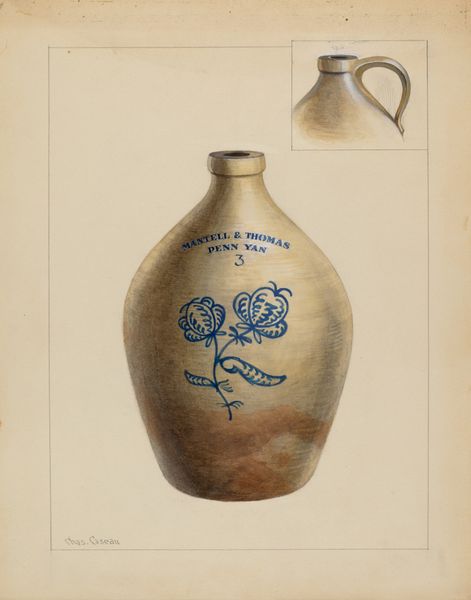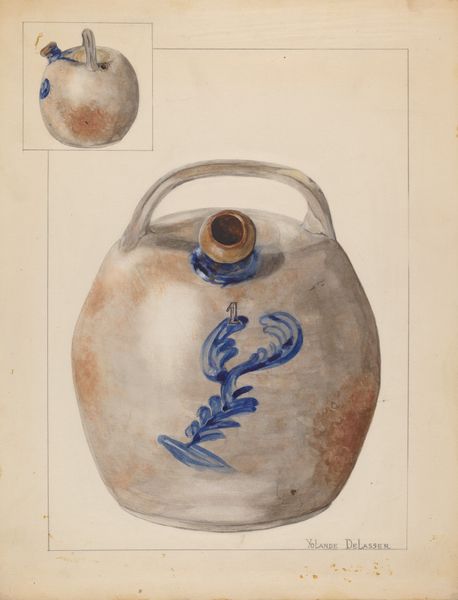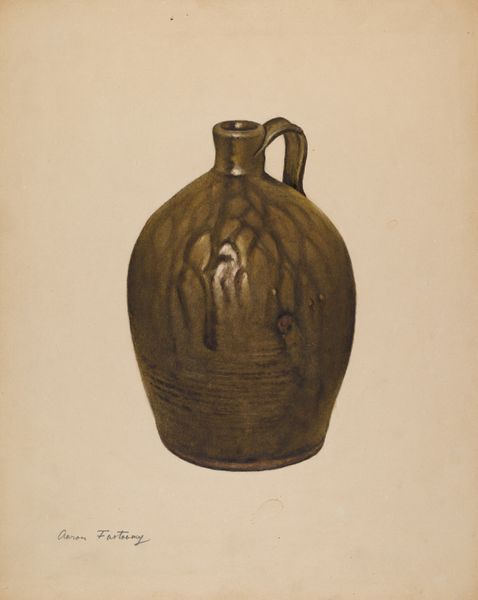
drawing, paper, watercolor
#
drawing
#
paper
#
watercolor
#
watercolor
Dimensions: overall: 27.9 x 22.8 cm (11 x 9 in.) Original IAD Object: 11 1/2" High 8 1/2" Dia.
Copyright: National Gallery of Art: CC0 1.0
Editor: This is Annie B. Johnston's "Stoneware Jug," dating to around 1937, a watercolor and ink drawing on paper. I'm immediately drawn to the muted palette. What strikes you most about this seemingly simple representation of a utilitarian object? Curator: Well, I'm interested in what this image tells us about production and consumption. Look at the precise rendering; it suggests a cataloging process. This was likely part of a larger record-keeping effort related to manufacturing. We see that the object itself is being represented for documentation, rather than elevated for purely aesthetic reasons. Editor: So, you're saying the artistry is secondary to its function as documentation? Curator: Exactly. Consider the jug's material—stoneware—a durable, practical material. Johnston’s choice of watercolor mimics, yet idealizes, its source. It presents the jug as both functional object and as an item for display, navigating a tension between art and industry. The visible flaws, rendered with exacting detail, provide information. What does this materiality communicate to you? Editor: I guess the depiction of imperfections could imply an honesty about the manufacturing process or suggest it’s maybe highlighting a pre-industrial method. The crack around the handle is clearly illustrated... it’s less about pristine artistry and more about conveying the lived reality of this jug. Curator: Precisely. It prompts us to consider the artist's role in a society increasingly shaped by mass production. This watercolor drawing on paper elevates the ordinary. Editor: I never thought about how closely linked art could be with something like inventory control! I learned that there can be different purposes to documentation other than pure science or information. Curator: Yes, seeing it through a materialist lens can bring into focus a piece’s relevance beyond its simple form or even intention.
Comments
No comments
Be the first to comment and join the conversation on the ultimate creative platform.
